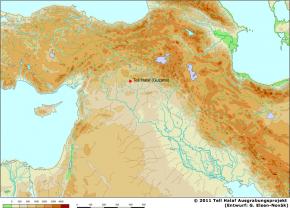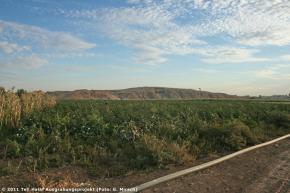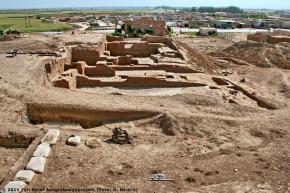 |
 |
||||||
IntroductionDr. Lutz Martin / Prof. Dr. Mirko NovákTell Halaf, situated in Northeast Syria at the springs of the Khabur river, is one of the most well known sites in the Near East (Fig. 1-2). As an important site, it is eponymous for a part of the Pottery Neolithic period (»Halaf period«, ca. 6000-5300 B.C.). After the Chalcolithic age, the place was obviously abandoned and not resettled before the early 1st millennium B.C. Under the name Guzana, it was first the location of the capital of an Aramaean principality, later the residence of an Assyrian governor. It is the Gosan of the Old Testament and, after the fall of the Assyrian empire, it continued to exist up to Seleucid or Parthian-Roman times. The site gained prominence upon the appearance of a large number of sculptures which decorated a palace of the Aramaean prince Kapara (late 10th to early 9th century B.C.) and had been laid bare by the excavations undertaken by the German diplomat and scholar Max Freiherr von Oppenheim in 1899, 1911-13 and 1929. The numerous statues and relief-decorated orthostats show an iconography which is unique for the Ancient Near East. Some of these monuments were on exhibition in the Tall-Halaf-Museum in Berlin up until 1943, when it was bombed in the course of World War II shattering the objects on display there. In a grand project, the broken monuments were restored at the Vorderasiatisches Museum in Berlin (www.tell-halaf-projekt.de). After a 77 year interruption, excavations were taken up again by a Syrian-German team of the Directorate General of Antiquities and Museums Damascus and the Vorderasiatisches Museum Berlin, in cooperation with the Martin-Luther-Universität Halle, the Ludwig-Maximilians-Universität München and the Eberhard Karls Universität Tübingen (ZDF - Terra X). The aim of the project is to further investigate the history of settlement on the citadel, as well as selected areas of the lower town (Fig. 3). For supporting and sponsoring the joint expedition, we would like to convey our gratitude to the Directorate General of Antiquities and Museums Damascus, especially its general director Dr. Bassam Jamous and the assistant general director for excavations Dr. Michel al-Maqdissi. On site, we are very grateful to our partner of cooperation, Dr. Abd el-Masih Hanna Bagdho, director of the administration of antiquities Hassake. We would also like to express our gratitude to the Deutsche Forschungsgemeinschaft (DFG). Without its financial support, our undertaking could have never been realized. (Translation: B. Finkbeiner / A. Sollee / B. Sollee) |
|
||||||
|
|
|||||||





